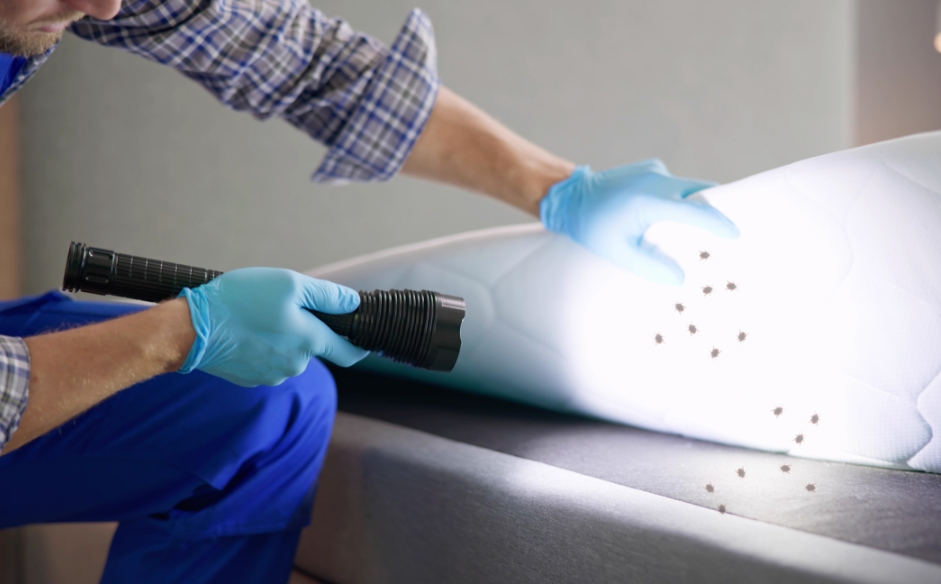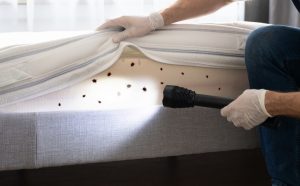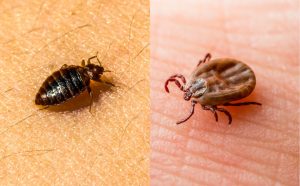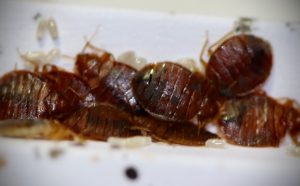Bed bugs, while tiny and barely seen, are a nuisance for many people around the world. These small insects feed on human blood and are mostly found in beds, hence their name.
Contrary to popular belief, having bed bugs doesn’t necessarily mean your house or bed is dirty. They can be easily brought into homes through luggage, clothing or furniture. Today, we will discuss what to do if you had slept in a bed with bed bugs, and how to prevent future infestations.
Signs of Bed Bug Infestation
Before we dive into the steps you should take, it is important to know how to identify a bed bug infestation. Some common signs include:
- Itchy red spots or bites on your skin, usually in a straight line pattern.
- Small bloodstains on your sheets or mattress.
- Tiny dark brown or black spots on your sheets or mattress, which are bed bug faeces.
- A musty odour in the room where you sleep.
If you notice any of these signs, it is important to take action immediately.
What to Do After Sleeping in a Bed with Bed Bugs
1) Remove and wash all bedding and clothing.
The first step is to strip your bed and remove all bedding, including sheets, pillowcases, comforter and mattress cover.
Place them in a plastic bag and wash them in hot water (at least 120°F) with detergent. Dry on the highest setting for at least 30 minutes.
2) Vacuum your mattress, box spring, and surrounding areas
This will help remove any bed bugs or eggs hiding in cracks or crevices.
Using a vacuum with a high-efficiency filter, thoroughly vacuum your mattress and box spring. Pay special attention to seams, crevices, and any cracks in the bed frame or headboard.
Empty the contents of the vacuum into a plastic bag, and dispose of it immediately outside your home.
3) Use a steam cleaner
If you have a steam cleaner, it can be a great tool to kill bed bugs and their eggs. The high temperatures of the steam are effective in killing these pests on contact.
Make sure to use the steam cleaner on all areas where bed bugs may hide, such as your mattress, box spring, bed frame, and headboard.
4) Use a bed bug spray
There are many bed bug sprays available on the market that can help eliminate these pests. Look for ones specifically labelled for use on mattresses and bedding.
Before using any spray, be sure to read and follow the instructions carefully. It is important to only use products that are safe for humans and pets.
5) Contact a professional exterminator
If you are unable to effectively get rid of the bed bugs on your own, it may be time to call a professional for a bed bug inspection and treatment.
They will also provide guidance on how to prevent future infestations, and may recommend follow-up treatments to ensure all bed bugs are eliminated.
How to Prevent Future Infestations
Now that you have taken care of the immediate problem, here are some steps you can take to prevent future bed bug infestations:
- Inspect hotel rooms and rental accommodations before settling in.
- Keep your luggage off the floor while travelling.
- Regularly vacuum and clean your bedroom, including behind and under furniture.
- Use bed bug-proof mattress encasements to prevent them from entering your bedding.
- Be cautious when buying used furniture or clothing, as they may have been in contact with bed bugs.
- If you live in an apartment building, notify your landlord immediately if you suspect a bed bug infestation.
Takeaway
While bed bugs can be frustrating and inconvenient, it is important to remain calm and take action immediately. By following these steps and taking preventative measures, you can effectively get rid of bed bugs and prevent future infestations.
Remember, if the infestation is severe or you are unable to handle it on your own, seek professional help. So, be cautious and keep an eye out for any signs of bed bugs to ensure a peaceful night’s sleep. Sweet dreams!




